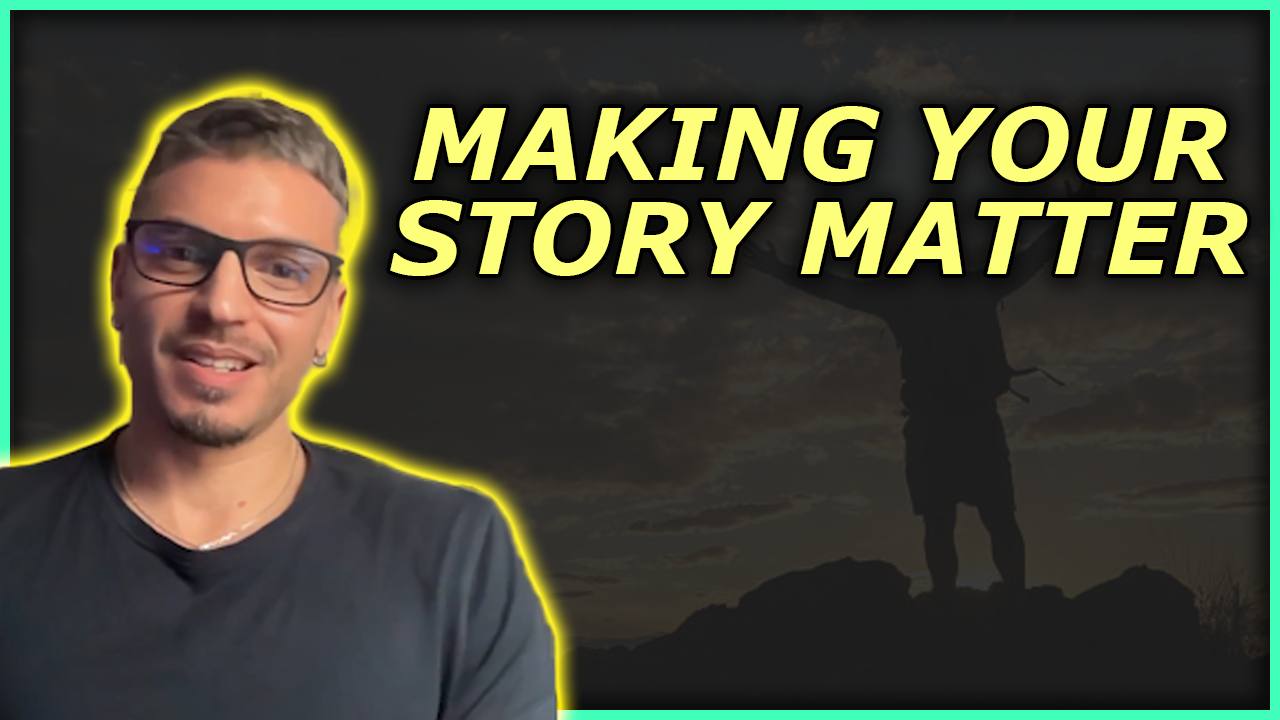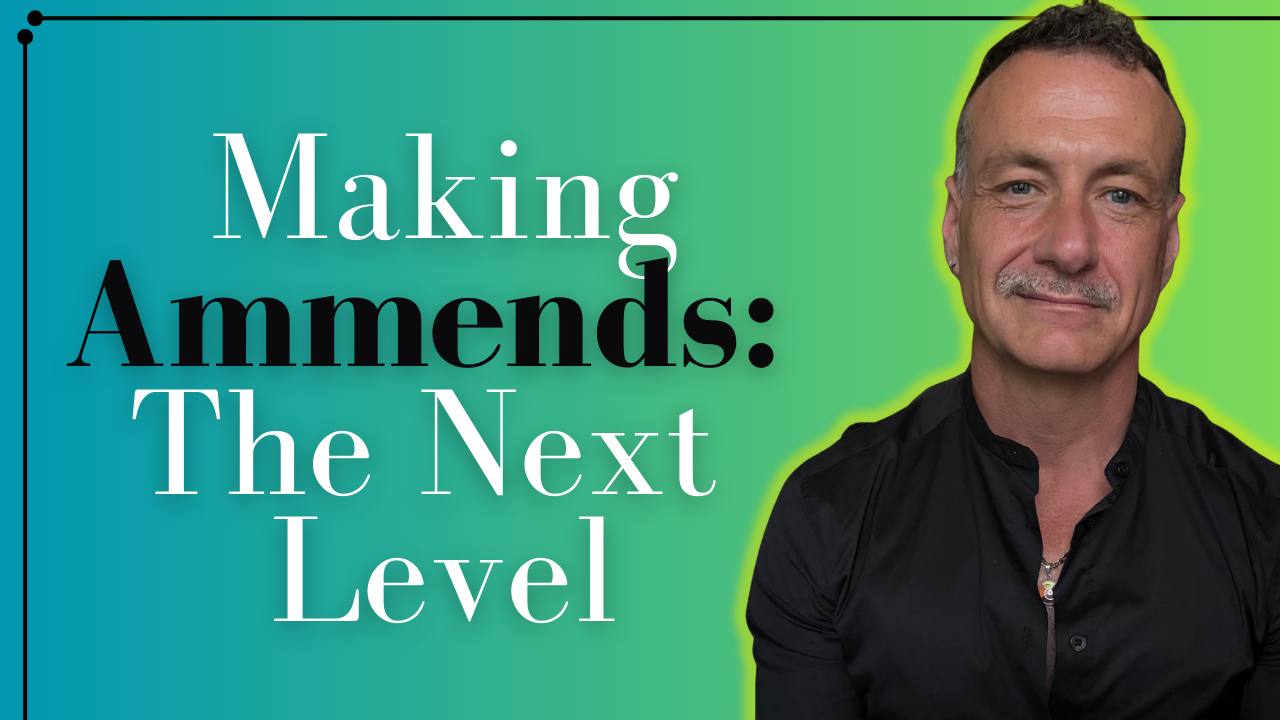My Methfree Blueprint: 7 Key Practices for the First 90 Days

Welcome to SEASON 2!
I'm launching this season with another solo pod. I hope you enjoy and I pray that you'll share it with anyone out there struggling with living meth-free.
The Meth-Free Blueprint: Seven Key Practices for the First 90 Days
1. Attend 90 12-step meetings in 90 days.
There is no better way to interrupt your daily pattern and set a foundation for transitioning from one life to another than committing to consistent daily action.
Meetings are already set up and waiting for you to show up—offered 24/7 in person or online.
If you're still in the meth closet, you can attend online meetings with your camera off.
The importance of these meetings isn't necessarily their content—it's the consciousness of making a commitment and keeping it.
This is very important in the early days. You're shocking your subconscious with a complete 180 from what you were doing when using meth.
Meetings help meet new people in recovery, establish structure in a chaotic life, set new routines, and rebuild self-trust by following through.
Reflective Questions:
- What has kept me from attending recovery meetings in the past?
- How might consistent meeting attendance help disrupt my patterns of use?
- What type of meeting environment feels most comfortable and safe for me?
Journal Prompts:
- Describe a time when making a consistent commitment to something changed your life for the better.
- What would need to change in my daily schedule to accommodate a meeting every day?
- Write about what "finding my tribe" in recovery might look like and feel like.
2. Find at least one person to be completely transparent with about your use and enlist them as your accountability partner.
This important part of recovery requires having at least one person who knows the truth about your use.
Choose someone who will provide non-judgmental support while still holding you accountable.
Give this person a "job description"—share the gritty details of what and how gay men behave on crystal meth so they understand what to watch for.
Give specific guidelines like checking your location at certain hours, calling a certain number of times per day, etc.
This is only temporary—they won't need to monitor you forever. The nature of this substance and the gay culture that promotes it, with apps readily available, requires extreme measures.
If you don't have such a person in your life, swallow your pride and ask your mom, sister, auntie, or someone you're scared to admit your problem to.
Bringing this out into the light will be the scariest but most liberating decision you can make.
Reflective Questions:
- Who in my life might be able to provide non-judgmental accountability?
- What specific areas or times of day do I need the most accountability?
- What fears come up when I think about telling someone the complete truth about my use?
Journal Prompts:
- What would complete honesty about my meth use look like? What details have I been hiding that would be important for an accountability partner to know?
- How has keeping my use secret affected my mental health and recovery efforts?
- Write a script for how you might approach someone to be your accountability partner. What would you say? What boundaries would you set?
3. Act as if you were in the witness protection program.
You want to disappear without a trace because other users will sniff you out.
The nature of meth addiction is such that if you leave any room for choice between meth and literally anything else, meth will always win.
The FOMO is real—just knowing that with one click of Grindr, the whole world of Chemsex would open up is too much to bear in early recovery.
This means changing your complete number (your phone number is oddly a part of your identity—letting go of it is figuratively and literally wiping out who you once were), deactivating all social media, installing blocks on your phone for apps like Grindr and sites like Sniffies, taking new routes to work, and changing every part of your normal routine down to getting out of bed on a different side.
This begins the momentum of creating a new identity—someone who doesn't use meth and is committed to being the best and highest version of yourself.
Reflective Questions:
- What digital "breadcrumbs" am I leaving that could lead me back to using?
- How attached am I to my current phone number and social media accounts? What does this attachment represent?
- Which daily routines and habits most strongly trigger thoughts of using?
Journal Prompts:
- If I were to completely reinvent myself, what would I keep and what would I leave behind?
- What excuses am I making for keeping potential pathways to relapse open?
- Describe in detail how your daily routine would need to change to support this "witness protection program" approach.
4. Ignore everything you know about relapse.
Embody the belief that if you use again, it is just part of the process—a point on the journey. When and if you do use, learn everything you can from it.
Take notice and be the observer of your emotions, thoughts, and behaviors. Study yourself.
Stay committed to recovery and anchor into the wins of how many days total you did stay abstinent, not how many days since your last use.
Focus only on giving weight to the positives, the wins, the Nordic Star goal of being your best self. How in the use experience or relapse were you your best self?
How can you respond to it as your best self? That is the goal. The more you notice the wins, the more you win.
The more you notice the losses, the more you lose. Instead of saying "I'm never using again," which sets unrealistic expectations, change your daily mantra from "don't use meth" to "I'm my best and highest version of myself today."
Reflective Questions:
- How has shame about relapse affected my recovery efforts in the past?
- What could I learn about myself if I approached relapse with curiosity instead of judgment?
- How would focusing on total days abstinent rather than consecutive days change my perspective?
Journal Prompts:
- Write about a time when you "failed" at something but learned a valuable lesson from it.
- What would it look like to be gentle with yourself after a relapse while still holding yourself accountable?
- Complete this sentence: "Being my best self today means..."
5. Masturbate twice a day or more.
Many people searching for the answer to why they relapse or why a craving took them over find that sexual energy is a major trigger.
There is no better way to get rid of a Tina craving than post-nut clarity.
In the beginning, this can be the most effective way to keep yourself from succumbing to the desperation and sometimes uncontrollable drive of your libido.
Your brain associates sex with meth, so when you are horny, you are triggered to use meth.
Over time, the work will be sexual reintegration, but that isn't happening in the first 90 days.
Your body has been in full sex mode for a long time—you can't just cut that off all at once because the pressure and sexual energy will build up so strong, and you aren't equipped to handle that.
Reflective Questions:
- How has my sexual behavior been connected to my meth use?
- What patterns do I notice between sexual desire and cravings?
- What alternative outlets for sexual energy might work for me besides using?
Journal Prompts:
- Describe your relationship with sex before, during, and how you hope it will be after addiction.
- What feelings or situations typically trigger sexual urges that lead to using?
- How do I feel about the connection between my sexuality and meth use? What feelings come up when I think about untangling these?
6. Systemize your life.
Willpower is pretty much bullshit. Set up systems in your life to support your vision so you don't fall.
Every single day of your life in early recovery needs to be a system, a plan, a deliberate preemptive strike on old programming and patterns.
You want to set up your life so there is absolutely no way you could even use meth if you wanted to.
This requires giving up privacy, fun, and many things you were used to—maybe alcohol, gay events, evenings alone—in the name of investing in a future where you can enjoy these things as your new potentialized self.
Where you are now, that first vodka drink with friends at the club costs you the next 2-3 weeks of your sanity, relationships, career, and self-respect.
Ask yourself: When is my most detrimental danger zone? Set up your life with a system that blocks this pattern.
Reflective Questions:
- What times, places, or situations present the highest risk for me to use?
- What systems could I put in place to make using as difficult as possible during these high-risk times?
- What am I willing to temporarily give up to build a foundation for lasting recovery?
Journal Prompts:
- Trace the typical pattern that leads to using, from the first trigger to actually using. What intervention points exist along this path?
- What would a typical weekend look like if it were systematized to prevent any possibility of using?
- Reflect on a time when having a structured routine helped you accomplish something difficult.
7. Spend every chance you get visualizing your life as the best and highest version of you.
Close your eyes and live in your future. Remember your future.
Create and dream big. Use your five senses and literally manifest your future.
See your home, the furniture, smell the burning incense, hear loved ones in other rooms, taste your dinner. Engross yourself with the emotion of your life as it's going to be, as if it were now.
This vision will carry you through and give you the strength you need. It will make a difference through any cravings, doubt, fear, or hardship.
This vision will hold you at night, comfort you when standing before a judge, and calm you when your heart is racing.
Leave your body during difficult times and be sitting in that future vision.
Reflective Questions:
- What does the "best and highest version" of myself look like, feel like, and act like?
- How clear is my vision of my future? What details are missing that I could add?
- How might regular visualization help rewire my brain away from addiction patterns?
Journal Prompts:
- Write a day in the life of your future self in vivid detail, using all five senses to make it real.
- What small evidence can you see in your life today that you're already becoming this future version of yourself?
- What emotions arise when you think about this future self? Hope? Doubt? Excitement? Fear?
Conclusion
These seven practices aren't necessarily in order of importance, though the last one—visualization—is perhaps the most powerful tool you can use at any stage of recovery.
Remember that these practices are designed specifically for the first 90 days, the critical period where you build a foundation for a new life.
Recovery is not linear, and it's not just about abstinence.
It's about transforming your entire identity.
As you work through these practices, be patient with yourself.
Each step, no matter how small, is moving you forward.
Your journey is unique, and there's no universal timeline for healing.
I believe in you, and I know transformation is possible because I've lived it.
Take what resonates from this guide, adapt it to your unique circumstances, and remember you're never alone.
Love you! Dallas





Responses